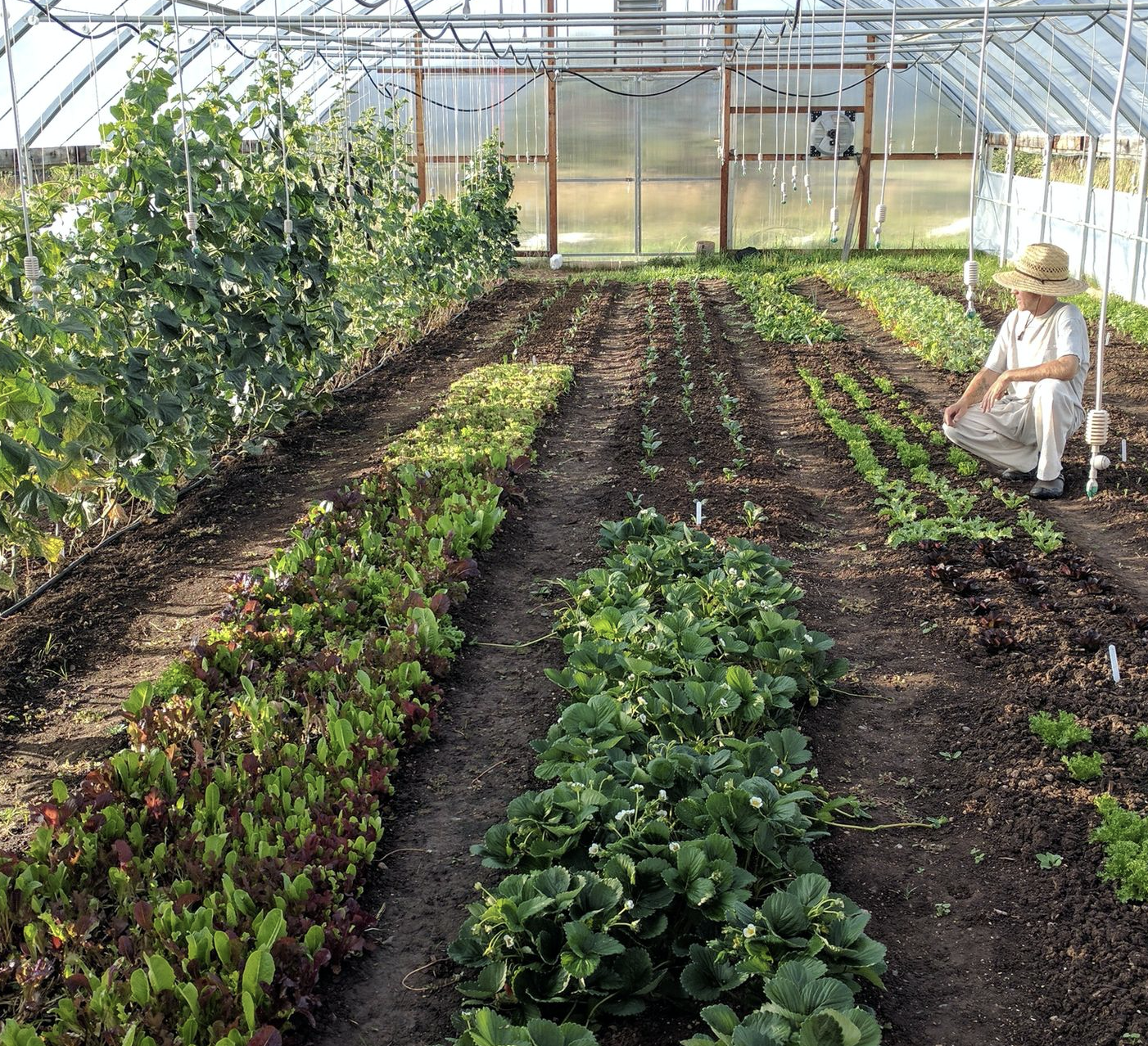The Biggest Bang for Your Buck

Sam Starsiak is a farmer out in New Mexico; he’s also an all-access member of “The Farmer’s Office.” I’ve gotten to know him over the last year as he’s taken full advantage of Office Hours. One thing that impressed me was how much he reached out to industry professionals to enhance his skills and learning. Maybe I’m biased because he once said to me, “The value of you is extreme” but I trust his opinion on the different options out there, and how you can get the most out of your educational dollars. I asked him to share with you some of his experiences.
I have been homesteading and market farming in mountains of northern New Mexico since 2008. When my wife and I bought the land, our intention was to grow enough food for ourselves, including vegetables, chickens, ducks and sheep. The land was originally pasture with a small hay operation. I didn’t like it, nor did I feel it was sustainable. We started market farming when we realized that our 3 acres of new orchard (converted pasture) would take 10 years to come to fruition. I thought I’d eventually make a living from the orchard (full-time in the future) and market farm would be an intermediate supplementary step.
I currently teach high school and farm full time! As I work towards taking a passion for farming and potentially turn it into my sole income, I decided to learn as much as I could from all the professionals out there who were offering in-person courses and online courses.
I’ve taken dozens of courses, attended countless conferences, and received mentorship from many people in my community. After these experiences, I developed a sense of how to identify high value information that couldn’t otherwise be gained from a book, YouTube video, or just good-ole scouring of the internet.
Given the breadth of learning experiences I’ve had, Julia asked me to offer an overview of the resources out there and offer some insights into the value of these program.
I’ve taken courses online and in-person. While being with the professionals on their farms in person is probably superior to online and excellent for information absorption, the cost of travel, room, board, and attendance is a hefty dint to the pocketbook. Combined with the time away from the farm, it adds up! If you have the money and time, of course do it. Even better (with the flexibility of living circumstances) see if you can get a paid job on their farm.
With my experience as a teacher, I know that the best types of workshops are “I do; we do, then you do”: The instructor demonstrates a concept or technique (I do); the participants try out the concept or technique together with the instructor (we do), and then the farmer returns home to practice (you do). The “we do” is rare in most workshops, even when they are in-person; they are usually “I do, you do.” For that reason, if you could spend $1,000 on 3-day workshop or join a lifetime membership online course for the same price; I’d put the better value for the online course. (And honestly, that’s why Julia’s office hours are so valuable for me: they provide the moments of “we do”).
There are many different programs and learning opportunities out there. Trying to evaluate which ones are better than others can be difficult. As a general rule, I find that the programs where the instructor is sharing from personal experience is better. Be wary of manufacturers and distributors who offer to educate you for free. Their goal is to have you buy their products.
Here’s an overview of the different programs I’ve participated:
Small Farm University with Michael Kilpatrick
(Julia’s side note: he’s sponsoring the Small Farm Summit starting this Friday)
- This is an online program that costs $40/month.
- There are a vast array of modules available (far more than the 28 advertised).
- The best thing I learned were tips on how to set up my farmers market booth.
Curtis Stone – The Urban Farmer
- I took this course in Sweden as part of the Perkins workshop.
- It cost $2,000 plus all the travel expenses.
- The best thing I learned was the importance of hiring outside help and how to do that.
- This is an online program that costs $85/month.
- It has a recurring 13-week program that goes through Darren’s 10 layers of permanence
- Best thing learned so far is how much farm planning you can do through mapping in Google Earth.
The Lean Farm School with Ben Harman
- This has a one-time, lifetime program fee of $900.
- It has multiple course modules on farming
- The best thing I learned was the precision growing techniques for specific crops such as greens and tomatoes.
Holistic Management International
- One time fee of $350 for a 10 week live (online) course.
- The best thing I learned was using the holistic management framework for business planning.
- Monthly fee of $49.
- Has multiple modules on the financial workings of a farm business
- The best thing I learned was how to use QuickBooks for a farming business
- In-person workshop that cost $2,000
- It offers a macro view of farm planning, keyline design and levels of permanence.
- The best thing I learned was how to correctly keyline on contour and source more on-farm inputs. If you want to do pastured poultry, Richard is excellent.
